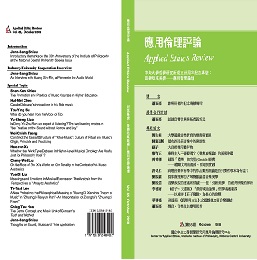最近,音樂存有學家關心:什麼事物是一個特定音樂形式中
的藝術品。安德魯·卡尼亞 (Andrew Kania) 相信那些作品類型辯論為他的音樂經驗帶來哥白尼革命,但李·布朗 (Lee B. Brown) 和詹姆斯·揚 (James O. Young) 都認為卡尼亞搞錯了,那些辯論對欣賞實踐毫無幫助,最多對哲學本身有益。我在這篇文章中回應他們的批評,替作品類型辯論的實用價值辯護。我主張這種辯論會激勵我們在不同種類的藝術事物間轉換注意力,帶來截然不同的欣賞經驗。
Recently, musical ontologists cared about what types of objects are artworks in a specific music form. Andrew Kania believed that these work type debates initiated a sort of Copernican revolution in his experience of music, but Lee B. Brown and James O. Young both claimed that Kania was wrong; these are useless for our appreciative practice, and at best are useful just for philosophy itself. In this article, I respond to their criticism and defend the practical value of the debates. I argue that the debates may have us shift our attention between different types of art objects, and result in an entirely different experience of appreciation.
